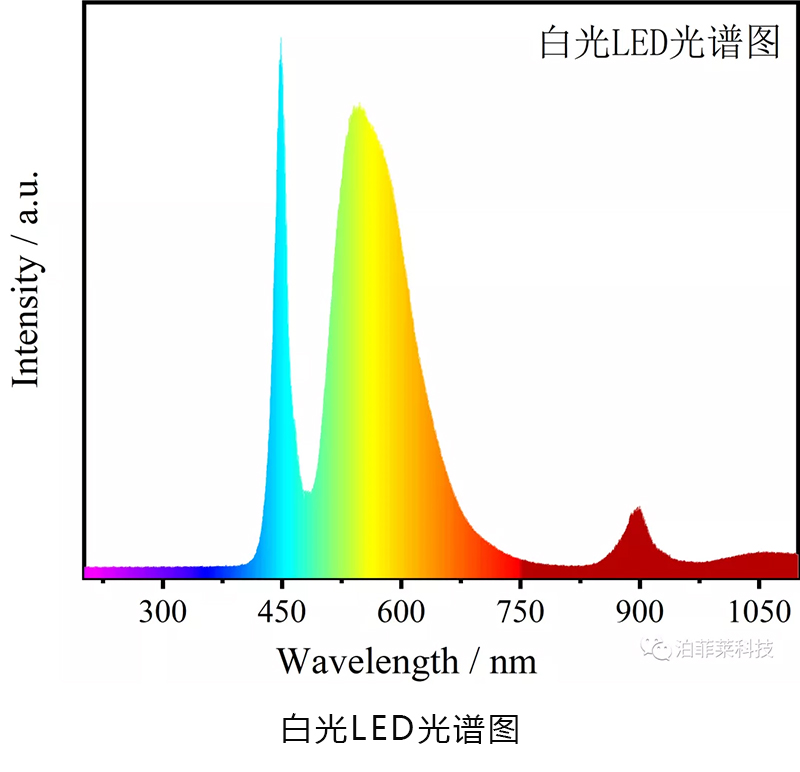LED, or Light Emitting Diode, consists of a core made up of p-type and n-type semiconductors, with a transition layer known as the p-n junction in between. In some semiconductor materials, when minority charge carriers injected into the p-n junction combine with majority charge carriers, they release excess energy in the form of light, directly converting electrical energy into light energy.
When an LED is in a forward-biased state, current flows from the LED's anode to its cathode, causing the semiconductor crystal to emit light of different colors ranging from ultraviolet to infrared, with the intensity of light dependent on the current.
The spectral range of LED light sources is narrower than that of sunlight and primarily falls within specific monochromatic wavelength ranges. The spectral wavelengths, from shortest to longest, include blue, green, yellow-green, yellow, orange, and red. Typical peak wavelengths for common colors are: 365 nm for ultraviolet, 475 nm for blue, 500 nm for blue-green, 525 nm for green, 590 nm for yellow, 610 nm for orange, and 625 nm for red.

White LED light is generated by exciting yellow phosphors using blue LEDs. Hence, white LEDs exhibit an energy deficit near 480 nm, resulting in significant differences from the solar spectrum. LED light sources are often measured by their color temperature: below 3000 K is considered warm white, 3000–3300 K is warm white, 4000–4500 K is natural white, 6000–6500 K is cool white, and above 7000 K is cold white.
LED light sources are mainly used for photochemical research under single-wavelength conditions. In photochemical experiments, single-wavelength LED light sources are commonly used to investigate photocatalytic quantum efficiency. A commonly used device is the Perfectlight PLS-LED 100C High-Power LED Light Source, which offers nearly 40 selectable single wavelengths covering the range from 365 nm to 940 nm in addition to white light and special LED chip options.
Compared to mercury and xenon lamps, LED light sources offer several advantages, including excellent monochromaticity, being cool light sources, long lifespans, energy efficiency, and eco-friendliness.
1. Excellent Monochromaticity:
For single-wavelength LEDs, their full width at half maximum (FWHM) is related to the output wavelength and is typically 10 nm. This is lower than that of xenon lamps with filters, making LED light sources more accurate in quantum efficiency calculations for quantum efficiency testing.
2. Cool Light Source:
LED light sources are cool light sources and generate almost no heat compared to the high heat output of other light sources. This advantage is particularly useful in photothermal catalysis experiments where temperature stability is crucial.
3. Long Lifespan:
LEDs primarily emit light through the continuous movement of charge carriers and are not prone to aging or burning out. This intrinsic mechanism ensures a lifespan of up to 10,000 hours, far longer than xenon and mercury lamps.
4. Energy Efficiency:
As mentioned earlier, LED light sources are cool light sources and generate minimal heat. Consequently, they consume significantly less energy compared to other light sources that produce a substantial amount of heat.
5. Eco-Friendly:
LEDs are solid-state light sources with advantages such as impact resistance, recyclability of waste, and the absence of harmful elements like mercury and xenon.
If you have any questions regarding LED light sources, you can contact Perfectlight Technology through their official WeChat account (Perfectlight2002) or call them at 400-1161-365.
